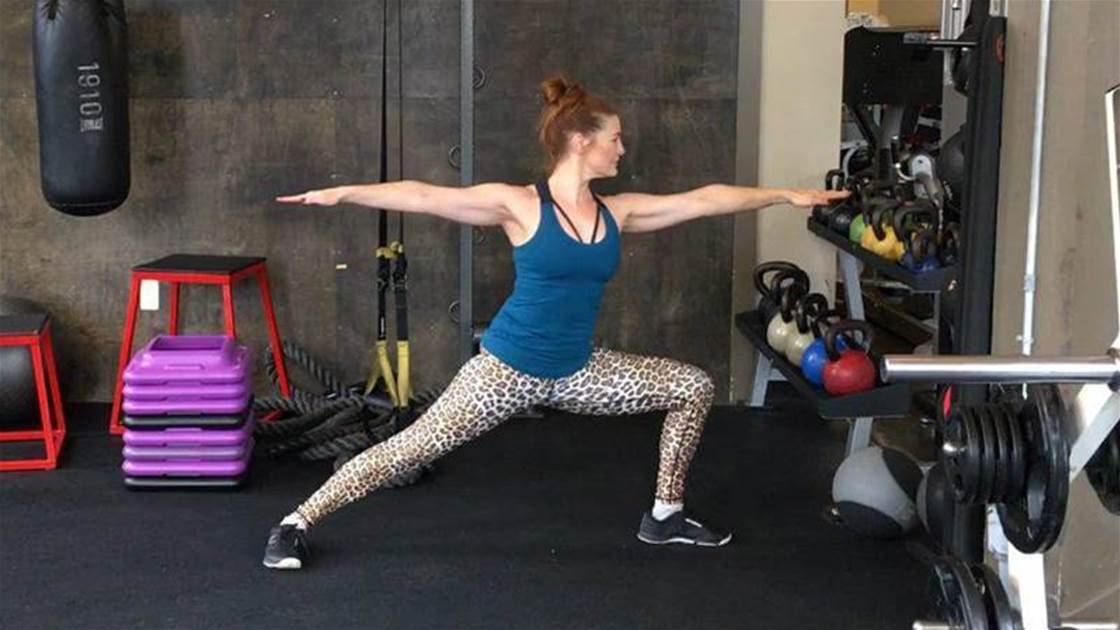"The key for bone health exercises is that they must be weight-bearing," says Jotwani. "Weight-bearing exercises stimulate osteoblasts, the bone cells that are responsible for bone growth." So, while activities such as swimming and cycling are excellent aerobic exercises, they are less beneficial for bone health than, say, walking, running, or Zumba, because they don't involve weight-bearing moves, Jotwani explains.
MORE: 3 Exercises To Gently Strengthen Your Lower Back
Holly Perkins, a Los Angeles–based personal trainer, agrees, stressing the importance of mixing in some higher-impact exercises for the health of your bones. "Most of my clients still believe impact is bad, but that's just not true," says Perkins. "However, if you don't want to run or if you have an injury that prevents you from playing tennis or skipping, there are plenty of other options," she says.
Here are the 5 best exercises you can do for the health of your bones, plus alternatives that might work better based on your age, injuries, or other factors.
Running... or squat jumps

Bone cells respond to impact by forming bone, says Joanne Halbrecht, MD, an orthopedic surgeon trained in sports medicine. That's why running is often cited as a great bone-building exercise: Every time your heel strikes the ground, it creates an impact on your bones that prompts more bone growth. Not a fan of jogging? Walking has a similar effect, though to a lesser degree, which is why Perkins recommends adding a few squat jumps to your next walking workout.
MORE: The Best Butt-Toning Move You've Never Heard Of
"On your next 30-minute walk, stop and do 10 squat jumps when you're 5 to 10 minutes in," says Perkins. "You'll get the same benefits as from running without actually running." To do a squat jump, place your feet shoulder-distance apart and drop down into a quarter of a squat. Then jump up as high as you can, land, re-set, and repeat. "You can do this as aggressively or gently as you like," says Perkins. "It's the landing that gives you the impact, which provides the bone-building benefit."
High-intensity exercises... or jumping jacks

Research shows that incorporating high-intensity exercises followed by periods of brief rest can positively impact bone health, says Barry Sears, MD, a physician and president of the Inflammation Research Foundation. "This style of training puts stress on the bone and releases growth hormone from the pituitary gland, which stimulates bone synthesis," he says. Now, this doesn't mean you have to sign up for that boot camp class at the gym or hit a WOD at your local CrossFit, says Perkins. "Simply doing 20 jumping jacks, three times a day, can go a long way toward boosting your bone health," she says. Do 20 in the morning, 20 after lunch, and then 20 before dinner, or do all 60 as three sets of 20 jumping jacks with just a little rest in between.
Weight training... or simply doing a dead lift

Getting into a regular strength training routine at least twice a week is something most doctors agree is a good move for healthy bones. "Resistance training has been shown to be necessary for preventing bone loss and maintaining strong bones," says Emilia Ravski, DO, a sports medicine physician with Hoag Orthopedic Institute in Southern California. Falling short of your twice-weekly weight-room goal? Simply incorporate one move—the dead lift—into your exercise routine twice a week, says Perkins.
MORE: The Active Plank Series That Tones Your Whole Body
"The dead lift uses nearly every muscle in your entire body, making it good for fitness and strength overall, and it's also a great stimulus for testosterone production, which is good for bone health," says Perkins. Start with your feet shoulder-distance apart and hold a barbell with your hands placed wider than your knees. Stand with a long, tall spine (which automatically makes you engage your core), then bend your knees, reach your hips back, and slowly lower the barbell down to the middle of your shins, keeping it close to your legs as you do. Pause here, then focus your energy into your heels and pull yourself upward. Start with three sets of 12 reps, and use a heavy enough weight that the last two reps of each set are very challenging.
Yoga... or simply practising Warrior 2

The ancient practice of yoga has been linked to many health benefits, and bone health is certainly one of them. One small-yet-groundbreaking study found that yoga increased bone density in practitioners' spine and hips; another bigger, more recent study produced similar findings. While making it to your favourite yoga class two or three times a week is ideal, Perkins says you can also simply incorporate Warrior 2 into your exercise routine.
MORE: The Most Important Exercises You Can Do To Prevent Neck And Shoulder Pain
To do Warrior 2 Pose, stand with your feet about 4 feet apart with your right toes facing the wall in front of you and your left foot turned to about a 45-degree angle from the back wall. Bend your right knee deeply, so your right thigh is parallel to the ground; as you do this, keep your back leg and glutes firm. Raise your arms up so they're parallel to the ground and turn your head to gaze over your right fingertips. Stay here for 30 seconds to 1 minute, then switch sides. "In this pose, you're dropping into such a low position in your front leg that your pelvis, legs, and core are getting a big workout," says Perkins. "When done properly, Warrior 2 is an intense strength- and bone-building exercise."









